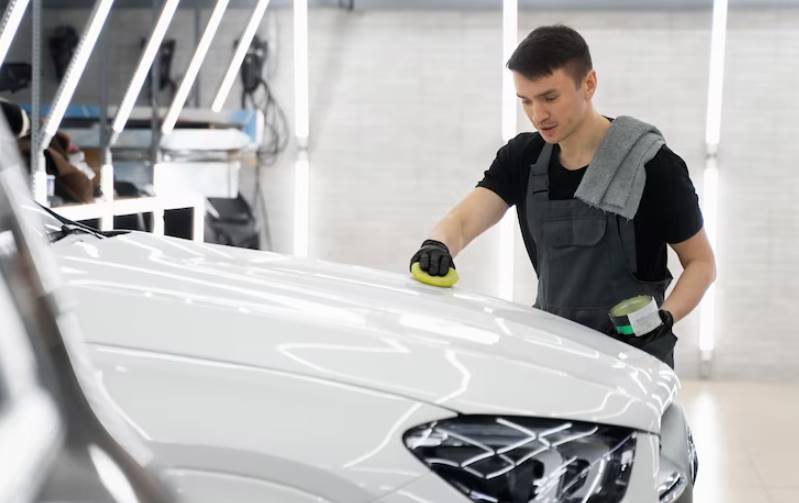In the ever-changing world of technology and gadgets, cars are no exception. From the newest autonomous driving features to the latest in-car entertainment systems, the automotive industry is constantly introducing new technologies that make driving safer and more enjoyable. As the technology continues to evolve at a rapid pace, it is important for drivers to stay up to date with the latest car technology and gadgets.
The latest car technology and gadgets are designed to make driving safer and more efficient. Advanced driver-assistance systems (ADAS) like lane departure warning systems, blind spot detection, and automatic emergency braking can reduce the chance of an accident and help drivers stay alert on the road. In-car entertainment systems, such as built-in GPS navigation systems, Bluetooth connectivity, and even wireless charging stations, make it easier to stay connected while on the go. All of these features and more can be found in the latest car models, making it easier than ever to stay up to date with the latest car technology and gadgets.
In today’s world, it is essential to stay up to date with the latest car technology and gadgets. With the introduction of new features and technologies, drivers can stay safer on the road and enjoy the convenience of modern in-car entertainment systems. Whether you’re looking for the latest gadgets or just want to stay ahead of the curve, keeping up with the latest technology and gadgets can make a big difference in your driving experience.

Smart Car Technology
Autonomous Driving Technology
Autonomous driving technology is the advanced technology that allows vehicles to operate without the need of a human driver. This technology allows cars to use a combination of cameras, sensors, and computer algorithms to navigate roads, detect obstacles, and make decisions in real-time. Autonomous driving technology can reduce the need for human drivers, which can result in more efficient transportation, fewer accidents, and more time for people to do the things they enjoy.
Lane Departure Warning System
The lane departure warning system is a safety feature that is designed to alert drivers when a vehicle is drifting out of its lane. This system is typically composed of cameras and sensors, which detect when the vehicle is leaving its lane without indicating. When activated, the system will alert the driver with a visual, audible, or tactile warning, allowing them to take corrective action.
Adaptive Cruise Control
Adaptive cruise control is an advanced cruise control system that uses radar and cameras to detect the speed of other vehicles on the road. This system can automatically adjust the speed of the vehicle, allowing it to maintain a safe distance from other vehicles on the road. This can result in smoother, more efficient driving, as well as increased safety.
Parking Assist
Parking assist is a feature that assists drivers in maneuvering their vehicle into tight parking spots. This system uses sensors and cameras to detect the size of available parking spots and can guide drivers into them with audible or tactile warnings. This can make it easier and faster to find a parking spot, as well as reducing the risk of accidents.
Voice-Activated Controls
Voice-activated controls allow drivers to control their vehicle using voice commands. This can be used to adjust the climate control, navigate to a destination, or even control the audio system. This technology can make it easier and safer to control the vehicle, reducing the need for drivers to take their eyes off the road.
Connectivity and Infotainment
Connectivity has become increasingly essential for vehicles, allowing drivers to stay connected, informed, and entertained no matter where their journey takes them. Today’s vehicles come equipped with a wide range of infotainment technologies, providing drivers with a variety of connectivity options.
Apple CarPlay and Android Auto are two popular infotainment systems that allow drivers to connect their smartphones to their vehicle. With CarPlay and Android Auto, drivers can access the full range of their phone’s features while they are driving, including music, podcasts, directions, and more.
In-car Wi-Fi and hotspot technology is also becoming increasingly popular in vehicles. This technology allows drivers to connect multiple devices to the internet while they are in the car, allowing them to stay connected on the go.
In-car entertainment systems also provide drivers with a variety of connectivity options. These systems typically include an audio system, video system, and navigation system, allowing drivers to stay informed and entertained while they are on the road.
Navigation systems are also becoming increasingly common in vehicles. These systems provide drivers with real-time navigation information, allowing them to find their way to their destination quickly and easily.
Digital dashboard displays are also becoming increasingly common in vehicles. These displays provide drivers with information about their vehicle’s performance and fuel efficiency, allowing them to make informed decisions while they are driving.
Overall, connectivity and infotainment technologies are becoming increasingly important in vehicles as they allow drivers to stay connected, informed, and entertained while they are on the road. From Apple CarPlay and Android Auto to in-car Wi-Fi and hotspots to in-car entertainment systems to navigation systems to digital dashboard displays, today’s vehicles are providing drivers with more connectivity options than ever before.
Safety and Security
Safety and security are essential components of a vehicle. In recent years, automobile companies have developed several safety and security features to protect the passengers and other road users in case of emergency. These features include blind spot monitoring, collision avoidance system, automatic emergency braking, night vision assist, anti-theft and vehicle tracking systems.
Blind Spot Monitoring
Blind spot monitoring is a safety feature that helps drivers detect traffic in their blind spots. This feature is usually included in high-end cars and uses sensors to detect vehicles in the driver’s blind spots. When a vehicle is detected in the blind spot, a warning light or an audible alert is activated to alert the driver.
Collision Avoidance System
Collision avoidance system is a safety feature that helps drivers avoid collisions with other vehicles or objects. This system uses a combination of sensors and cameras to detect obstacles in the driver’s path. When an obstacle is detected, the system automatically applies the brakes to avoid a collision.
Automatic Emergency Braking
Automatic emergency braking is a safety feature that helps drivers avoid collisions with other vehicles or objects. This system uses a combination of sensors and cameras to detect obstacles in the driver’s path. When an obstacle is detected, the system automatically applies the brakes to avoid a collision.
Night Vision Assist
Night vision assist is a feature that helps drivers see in low light conditions. This system uses special infrared cameras to detect obstacles and other vehicles in the dark. The system then projects a thermal image onto the dashboard, allowing the driver to see more clearly in the dark.
Anti-Theft and Vehicle Tracking Systems
Anti-theft and vehicle tracking systems are safety and security features that help protect a vehicle from theft. These systems use sensors to detect when a vehicle is being tampered with and alert the owner via text message or email. In addition, these systems can also track a vehicle’s location, allowing the owner to locate their vehicle in case of theft.
All of these safety and security features have been developed to ensure the safety and security of drivers and other road users. By using these features, drivers can be assured of the safety of their vehicles and the safety of the people around them.
Environmental and Fuel Efficiency
Hybrid and electric car technology: Hybrid and electric cars use electricity and gasoline or diesel to power their engines. Hybrid cars are powered by both an internal combustion engine and an electric motor, while electric cars are powered solely by an electric motor. Both types of cars require less energy than a regular gasoline or diesel car, making them more fuel efficient. Hybrid cars can also capture energy from regenerative braking to recharge their batteries, further increasing their fuel efficiency.
Regenerative braking systems: Regenerative braking systems use the energy generated when a car slows down to recharge the car’s battery. By capturing this energy, these systems reduce the amount of energy needed to power the car, leading to fuel savings. Regenerative braking systems can also reduce wear and tear on the vehicle’s brakes, further increasing the car’s efficiency.
Fuel-efficient engines: Fuel-efficient engines are designed to use less fuel than traditional engines, leading to fuel savings. These engines use a variety of technologies to reduce fuel consumption, including improved combustion chambers, better fuel injection systems, and more efficient turbochargers. By using these technologies, fuel-efficient engines can reduce emissions and improve fuel economy.
Eco-friendly materials in car manufacturing: Many cars are now being built with eco-friendly materials, such as recycled plastic, bamboo, and organic cotton. By using these materials, car manufacturers can reduce the amount of energy needed to produce the car, leading to fuel savings. Additionally, these materials are often lighter than traditional materials, further increasing the car’s fuel efficiency.
Charging infrastructure: In order for electric cars to be viable, a charging infrastructure must be in place. This infrastructure includes charging stations, which can be either public or private, and the necessary wiring to power the car. By investing in this infrastructure, governments and other institutions can help to make electric cars more accessible and increase their adoption.
Emerging Technologies
Augmented Reality Windshields
Augmented Reality (AR) Windshields are a new technology that provides drivers with an enhanced driving experience. It utilizes a combination of sensors and cameras to create a transparent display that overlays information onto the driver’s view of the road. This information can range from navigation and traffic details, to warnings and alerts. The system also has the potential to display augmented images such as arrows, signs, and other objects, to create an immersive driving experience. This technology can also be used to provide drivers with a better understanding of their surroundings and enable them to make better decisions while driving.
Biometric Vehicle Access
Biometric Vehicle Access is a technology that allows drivers to unlock and start their vehicle using their fingerprints, face, or voice. This technology is based on the principle of using biometrics to identify and authenticate a user. By using biometric authentication, vehicle owners can securely access their vehicles and protect them from unauthorized access. This technology can also be used to improve driver safety by providing a secure way to enter and exit the vehicle.
Smart Tire Technology
Smart Tire Technology is a new technology that is designed to improve the safety of vehicles by providing real-time tire pressure monitoring. This technology is based on the principle of utilizing sensors to detect changes in tire pressure. The sensors then transmit this data to the vehicle’s computer, which can then alert the driver if the pressure is outside of a safe range. This technology can also be used to monitor tire wear and provide real-time data on the vehicle’s performance.

V2X (Vehicle-to-Everything) Communication
V2X (Vehicle-to-Everything) Communication is a new technology that allows vehicles to communicate with other vehicles, pedestrians, and infrastructure. This technology is based on the principles of using dedicated short range communications (DSRC) to enable vehicles to communicate with each other and the surrounding environment. This technology can improve safety by enabling vehicles to detect and respond to potential hazards in their environment. It can also be used to improve traffic flow by allowing vehicles to communicate with traffic signals and alert drivers to upcoming turns or obstacles.
5G Connectivity and Its Impact on Car Technology
5G Connectivity is the latest generation of wireless communication technology. This technology is based on the principles of using high-speed, low-latency connections to enable faster data transmission and more reliable communication. This technology has the potential to revolutionize car technology by providing the infrastructure for self-driving cars, advanced vehicle-to-vehicle communication, and remote vehicle diagnostics. 5G Connectivity can also be used to improve vehicle safety by allowing faster and more reliable communication between vehicles and their environment.
Conclusion
In conclusion, the latest car technology and gadgets have revolutionized how we operate our vehicles, and have made driving more comfortable, efficient, and safe. With the advent of the internet and the rise of new technologies, the car industry has been pushed to its boundaries, introducing features that have given drivers more control over their vehicles and a better driving experience. Autonomous vehicles, enhanced infotainment systems, and advanced driver assistance systems are just some of the recent advancements in car technology that have made driving more enjoyable and stress-free. With the continued development of new technologies, the automotive industry will continue to revolutionize the way we drive. As technology advances, cars will become smarter, more efficient, and safer, allowing us to experience a new level of freedom and convenience when it comes to transportation.
FAQs
1. What is the latest car technology?
The latest car technology includes advanced safety features such as automatic emergency braking, lane departure warning and blind spot warning, as well as convenience features such as keyless entry, remote start and smartphone integration.
2. What are the best car gadgets?
The best car gadgets include dash cams, GPS navigation systems, Bluetooth hands-free calling devices, car chargers, and portable air compressors.
3. What types of car technology are available?
Car technology includes advanced safety features such as automatic emergency braking, lane departure warning and blind spot warning, as well as convenience features such as keyless entry, remote start and smartphone integration.
4. What is the newest car technology?
The newest car technology includes features such as self-driving capabilities, improved driver assistance systems, advanced infotainment systems, and augmented reality dashboards.
5. What are the most useful car gadgets?
The most useful car gadgets include dash cams, GPS navigation systems, Bluetooth hands-free calling devices, car chargers, and portable air compressors.
6. What are the top car technology trends?
The top car technology trends include self-driving capabilities, improved driver assistance systems, advanced infotainment systems, and augmented reality dashboards.
7. What are the benefits of car technology?
The benefits of car technology include improved safety, increased convenience, better fuel efficiency, and easier maintenance.
8. What are the best car technology products?
The best car technology products include dash cams, GPS navigation systems, Bluetooth hands-free calling devices, car chargers, and portable air compressors.
9. What is the most advanced car technology?
The most advanced car technology includes features such as self-driving capabilities, improved driver assistance systems, advanced infotainment systems, and augmented reality dashboards.
10. How can car technology make driving safer?
Car technology can make driving safer by providing features such as automatic emergency braking, lane departure warning and blind spot warning, which can help to prevent accidents.

















